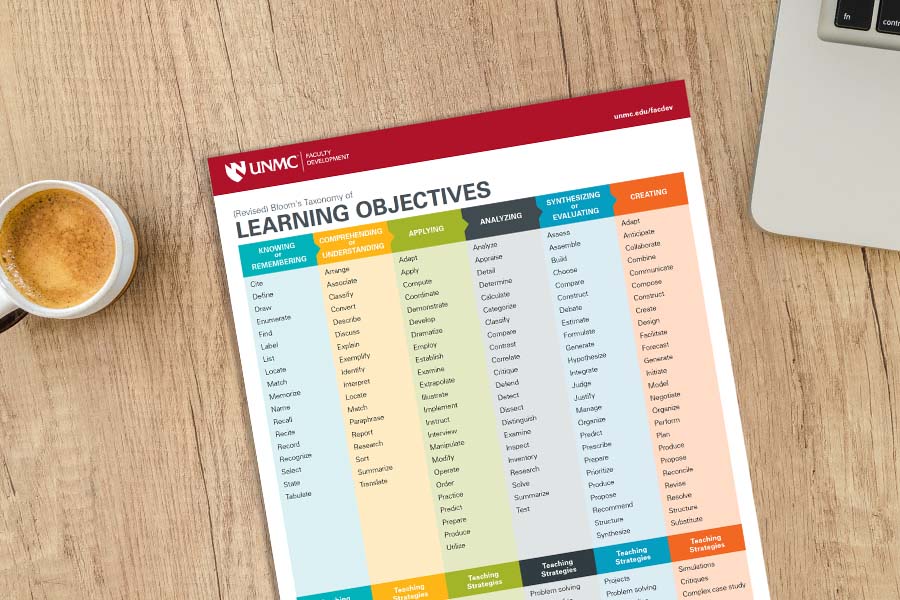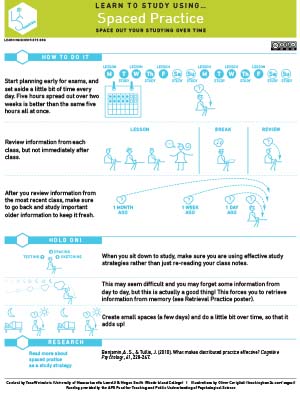Learning Strategies
Get tips on how to:
- Write effective learning objectives
- Utilize backward design
- Discover strategies for effective learning
Writing Learning Objectives
Your learning objectives should always include action verbs to describe the student activity. A valuable resource for action verbs is Bloom's Taxonomy of Learning Objectives.
Avoid vague and non-observable verbs. Also, limit yourself to 3-5 learning objectives. When constructing your objectives, follow this template:
- After this course is over, my students will be able to (action verb) + (defined by specific, observable terms).
Use this Taxonomy of Learning Worksheet to help you map your learning goals and objectives.

Bloom's Taxonomy Download
Bloom's Taxonomy of Learning Objectives is a valuable resource for creating a lesson that delivers desired outcomes. Click to download this resource.
As a result of participating in this course, students will be able to:
- Apply critical thinking and analytical skills to interpret data sets.
- Describe different viruses and how each can affect human growth.
- Communicate effectively with patients regarding diagnosis and treatment options.
- What are the most important concepts (ideas, methods, theories, approaches, etc.) that students should be able to understand, identify, or define at the end of your course?
- What lower-level information should students master and retain as part of their larger conceptual understanding of the material?
- What questions should your students be able to answer at the end of the course?
- What are the most important skills (quantitative analysis, problem-solving, critical thinking, etc.) that students should develop during and after your course?
- How will you help the students build these skills and test their mastery?
The following webinars are available to UNMC employees through Go2Knowledge, an online professional development platform. Watch the sessions below to learn how to get the most out of your learning objectives:
>>Teaching More By Grading Less: Creating Meaningful Assessments That Align With Learning Objectives | View webinar
>>Integrating Rubrics To Assess Higher Order Thinking Skills | View webinar
>> Designing Meaningful Learning Objectives That Foster Alignment Between Teaching Activities & Assessments | View webinar
Learn more about Go2Knowledge and how to access your account.
Backward Design (Outcomes-Based Design)
In backward design, a framework developed by Grant Wiggins and Jay McTighe, you build your course around the skills and knowledge you want your students to gain, not around predetermined assignments and activities. You anchor the development by carefully articulating the learning objectives–what you want students to learn–and work backward from there.
Download this infographic to quickly learn how to implement backward design principles into your next course.
Additional Resources:
- Educational Technology: Backward Design
- What is Backward Design? G. Wiggins & F McTighe, Chapter 1 in Understanding by Design (1998).
- Designing Backward, Georgetown University Teaching Commons
- Video: What is Understanding by Design?
6 Strategies for Effective Learning

Free, educational posters from the Learning Scientists to use as a guide for effective learning and studying.